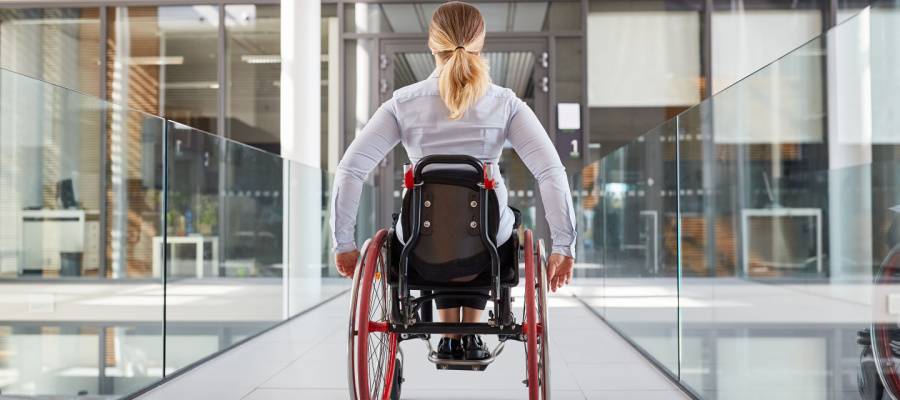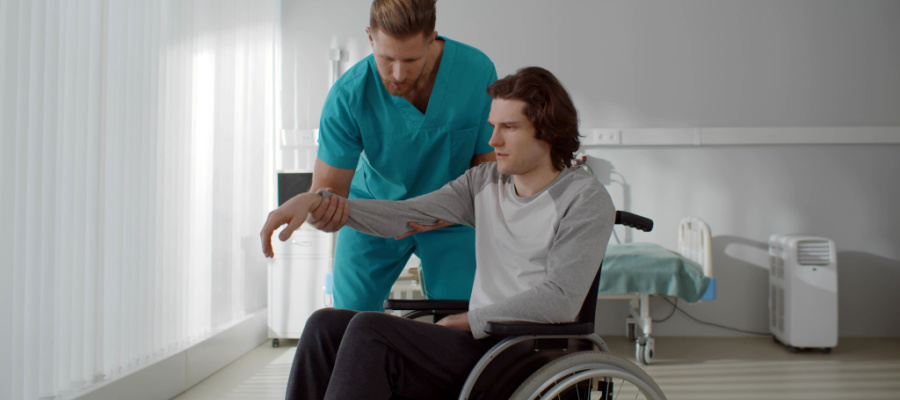What Are the 5 Types of Paralysis?
Paralysis is a medical condition that involves the loss of muscle function in part or all of the body. It can occur due to various causes, including injury, illness, or neurological conditions. Understanding the different types of paralysis can help individuals, caregivers, and healthcare providers better manage the condition. At Devoted Helpers, based in Sugar Land, Texas, we are committed to offering compassionate care for individuals affected by paralysis, ensuring they receive the support they need to maintain their quality of life.
In this article, we will explore the five main types of paralysis, including their causes, symptoms, and how they affect the body.
Monoplegia
Monoplegia is the least common form of paralysis and refers to the paralysis of a single limb (either an arm or a leg). The condition typically results from a localized injury to the brain or spinal cord.
Causes of Monoplegia
- Brain injury – Damage to a specific part of the brain, such as the motor cortex, can result in paralysis of one limb.
- Stroke – A stroke affecting a specific area of the brain can lead to monoplegia.
- Trauma – Injuries to the spinal cord or nerves affecting one limb can also cause this type of paralysis.
Symptoms
- Complete or partial loss of movement and control in one arm or leg.
- Numbness or loss of sensation in the affected limb.
- Muscle weakness or atrophy in the paralyzed limb.
Treatment
Treatment options often include physical therapy to improve strength and mobility, as well as rehabilitation to help the individual regain as much function as possible. In some cases, surgery or medication may be needed to address the underlying cause of monoplegia.
Hemiplegia
Hemiplegia is a type of paralysis that affects one side of the body, usually caused by a stroke or brain injury. It results in the loss of muscle function on either the left or right side of the body, affecting both the arm and the leg on that side.
Causes of Hemiplegia
- Stroke – A stroke that damages the motor control areas of the brain can lead to hemiplegia on one side of the body.
- Brain injury – Trauma to the brain, such as in a car accident or fall, can cause hemiplegia.
- Infections or tumors – Some neurological infections or brain tumors can also lead to hemiplegia by damaging the areas of the brain responsible for movement.
Symptoms
- Loss of movement in one arm and one leg on the same side of the body.
- Numbness or sensory loss in the affected side.
- Difficulty with coordination and balance.
- Possible speech or cognitive issues if the brain’s speech areas are involved.
Treatment
Hemiplegia treatment often includes rehabilitation therapies, such as physical therapy, occupational therapy, and speech therapy. The goal is to regain as much function as possible and assist with daily living activities.
Paraplegia
Paraplegia refers to the paralysis of the lower half of the body, typically affecting both legs and sometimes the lower torso. It is most commonly caused by damage to the spinal cord in the thoracic (mid-back) or lumbar (lower back) regions.
Causes of Paraplegia
- Spinal cord injury – Trauma such as a car accident, fall, or sports injury can result in spinal cord injury and cause paraplegia.
- Spinal cord diseases – Conditions like multiple sclerosis (MS), spinal cord tumors, or infections can also lead to paraplegia.
- Congenital conditions – Some individuals are born with conditions that affect spinal cord function, such as spina bifida.
Symptoms
- Paralysis of both legs, sometimes affecting the lower torso.
- Loss of sensation below the level of injury.
- Difficulty with bladder and bowel control.
- Potential complications like pressure sores, respiratory issues, and muscle atrophy.
Treatment
Treatment for paraplegia typically involves physical and occupational therapy to improve mobility and independence. Individuals may also require assistive devices, such as a wheelchair, and sometimes need surgery to address spinal cord damage. Ongoing medical care is essential for managing secondary health issues like pressure ulcers or respiratory problems.
Quadriplegia (Tetraplegia)
Quadriplegia, also known as tetraplegia, is the paralysis of all four limbs: both arms and both legs. It is most often caused by a high-level spinal cord injury, typically in the cervical (neck) region.
Causes of Quadriplegia
- Spinal cord injury – A cervical spinal cord injury, often due to trauma, can lead to quadriplegia.
- Neurological diseases – Conditions such as amyotrophic lateral sclerosis (ALS), multiple sclerosis (MS), and polio can also cause quadriplegia.
- Congenital conditions – In some cases, congenital conditions affecting the spinal cord or nerves can lead to quadriplegia.
Symptoms
- Loss of movement and sensation in all four limbs.
- Impaired or absent control of bladder and bowel function.
- Potential loss of respiratory function if the injury affects the diaphragm muscles.
- Difficulty with activities of daily living, such as eating, dressing, and grooming, due to the total loss of limb function.
Treatment
Quadriplegia requires intensive rehabilitation and long-term care. Individuals with quadriplegia often need assistance with daily activities, including bathing, dressing, and eating. They may also require respiratory support, adaptive technologies for communication, and psychological support to manage the emotional and mental aspects of the condition.
Bell’s Palsy (Facial Paralysis)
Bell’s Palsy is a temporary form of paralysis that affects the muscles on one side of the face. It occurs due to damage or inflammation of the facial nerve, leading to weakness or complete loss of movement on one side of the face.
Causes of Bell’s Palsy
- Viral infection – Bell’s Palsy is often linked to viral infections, such as the herpes simplex virus (which causes cold sores).
- Injury or trauma – In some cases, facial trauma or nerve damage can cause Bell’s Palsy.
- Genetic factors – Some individuals may have a genetic predisposition to developing Bell’s Palsy.
Symptoms
- Sudden weakness or paralysis of the muscles on one side of the face.
- Difficulty closing the eye on the affected side or smiling on that side.
- Drooping of the mouth or eyelid.
- Pain or discomfort around the jaw or behind the ear on the affected side.
Treatment
Bell’s Palsy often resolves on its own within weeks to months. In some cases, corticosteroids may be prescribed to reduce inflammation and speed up recovery. Physical therapy can also help improve facial muscle function.


